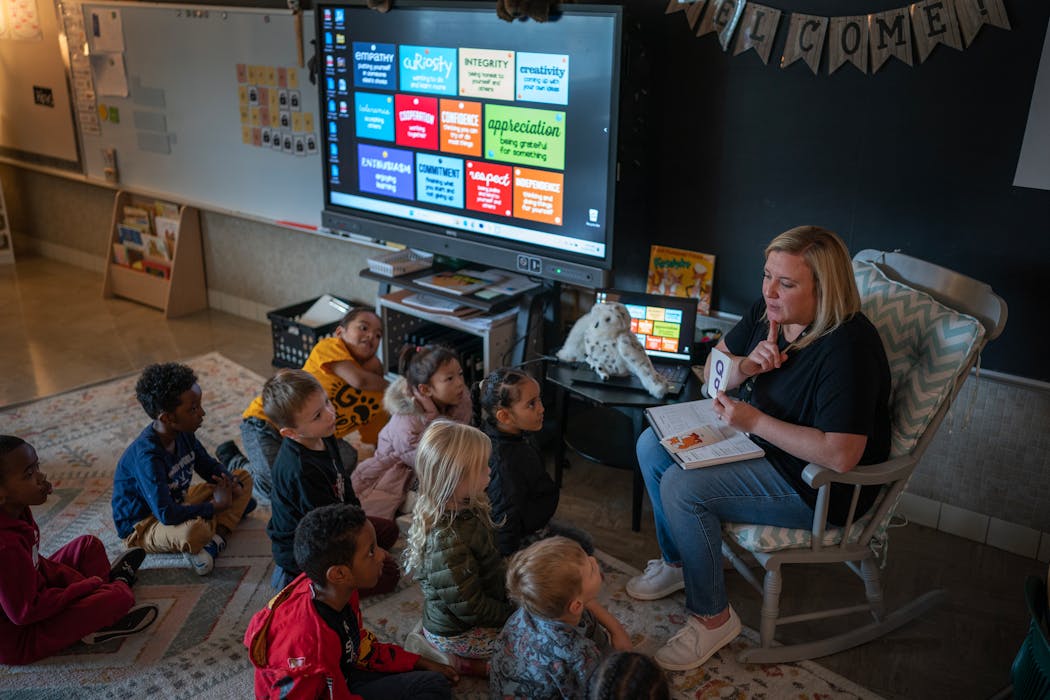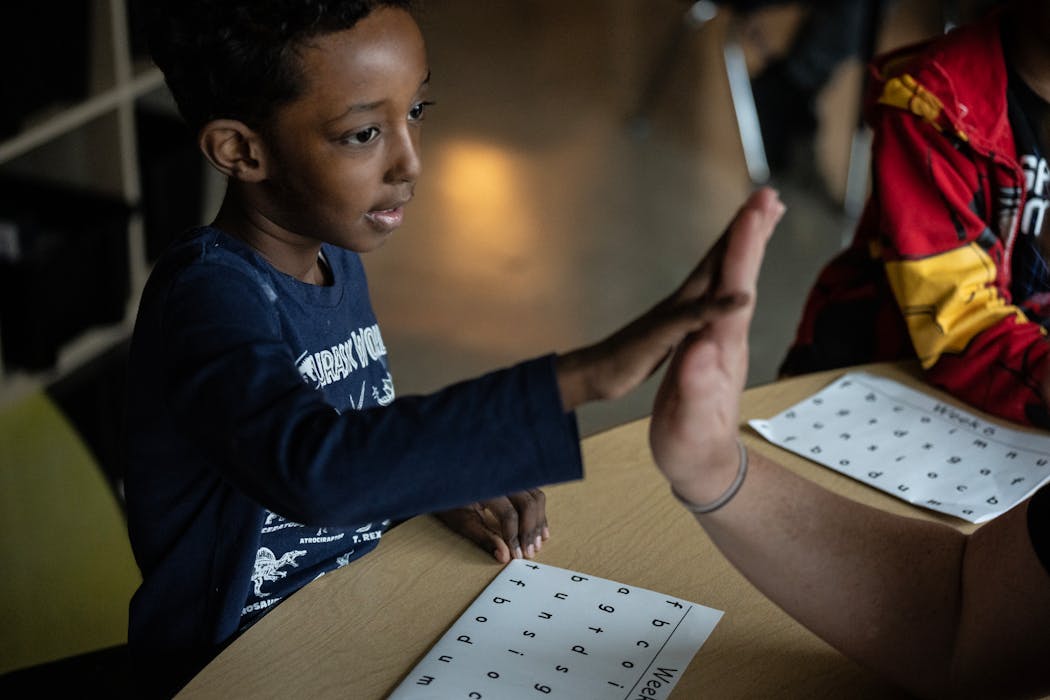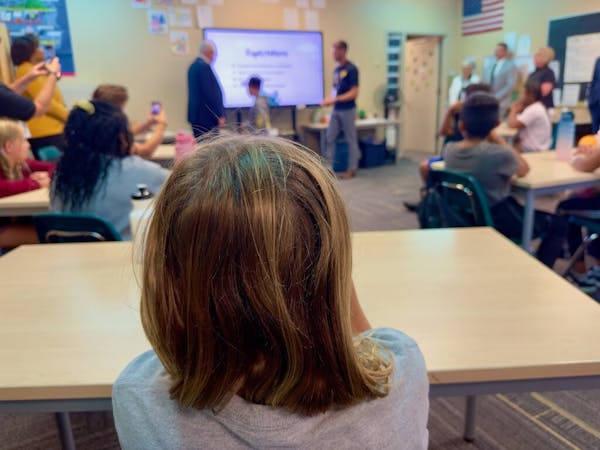Julie Novak, Minnesota's first literacy director and a former teacher, once found a cheat sheet in a student's notebook that underlined her conviction that everyone can learn to read. The teenager regularly struggled with his assignments. But he had scribbled a series of complex instructions and notes for a video game he was playing.
"He wanted to read when he needed to read," Novak said.
She's now tasked with taking several new mandates passed down by lawmakers earlier this year and bringing them into classrooms in an effort to boost anemic reading competency rates made worse by the pandemic. Over the next few years, she'll lead the effort to ensure every educator takes a uniform approach to reading instruction in a state that prizes local control of its schools.
"This is a new direction for Minnesota, to say there will be some consistency across the state," Novak said.
A handful of districts may provide a glimpse into how state leaders expect every educator to teach young children how to read.
Shifting away from memorization
It's been nearly a decade since Anoka-Hennepin officials began moving away from a literacy approach that relies heavily on the development of vocabulary and context clues. Educators now teach children the roots of words and repeatedly practice decoding them so that it becomes second nature, part of a strategy known as structured literacy.
"When we look at the previous approach, it only goes as far as your memory can carry you," said Ann Sangster, who was the principal of Mississippi Elementary in Coon Rapids from 2015 to 2020.
She's now the district's director of elementary curriculum, and she said the vocabulary-heavy model unintentionally set low expectations. Teachers would assign books they believed matched up with a student's skill level, which led both educator and pupil to believe that was the ceiling of their abilities. The tactic also proved harmful for advanced readers who breezed through their assignments and grew bored, sometimes disruptive.
Reading lessons now push every student to test their limits, Sangster said. Assignments that introduce long and difficult words are broken down into small steps, which allows teachers to zero in on where students are struggling. At Hamilton Elementary in Coon Rapids, teachers spend more time on phonics and phonemic awareness — or the sounds that make up words — than they did in the past.
"Those foundational skills are super important," Hamilton Principal Julie Bowman said.
More new mandates
Most of Anoka-Hennepin's elementary educators have been trained in Language Essentials for Teachers of Reading and Spelling (LETRS), one of three literacy programs approved by the state. The other two will be announced in January.
The Department of Education expects most elementary educators to be trained in these methods by summer 2025, with the target of having secondary educators trained by summer 2027.
Such programming requirements, along with Novak's job, are two of several new provisions in the sweeping education bill signed by Gov. Tim Walz this year. Lawmakers set aside $35 million for teacher training.
Administrators in the Moorhead district obtained state funding years ago to train elementary teachers in LETRS. At the same time, they had educators start meeting regularly in grade-level groups to discuss strategy. Once a month, teachers would meet across buildings.
Training educators in the same method gave them a common language to identify problems and devise solutions.
"We started to see a lot more sharing and collaboration, celebrations across the district," Supervisor of Elementary Teaching and Learning Courtney Seilor said, adding that the regular meetings gave educators a sense they were in it together.
The state will require every district to choose from two screeners: one developed by the company FastBridge and the other researched by the University of Oregon, called the Dynamic Indicators of Basic Early Literacy Skills (DIBELS). Educators liken the one-minute assessments to thermometers that give a sense of how well a student can identify written words and pronounce them.
The new law requires districts to screen every student in kindergarten, first, second and third grade at the beginning and end of the school year. Students who don't meet state reading benchmarks in grades above that will also be screened.
"We do that so everyone can screen on consistent criteria," Novak said.
Anoka-Hennepin and Moorhead are already using FastBridge screeners. So are educators in Fridley, where Director of Teaching and Learning Jason Bodey says the assessments give teachers a "satellite-level" view of a student's reading abilities.
"It gives you a sense of who needs attention," Bodey said.
As teachers work with their students in the classroom, they get a street-level view that allows educators to identify supports for struggling readers. It may be something as simple as an extra few minutes on a given concept, or having that student work with a reading specialist.
Everyone on the same page
Fridleyhas also been training educators in LETRS — most educators who work with kindergartners and first and second-graders have been licensed. Each license costs $1,000, and the district has tapped into state grants to get there. But barriers remain.
"It's daunting to try and figure out how to make time for it," said Kirsten Wickman, the district's curriculum coordinator.
Education officials liken LETRS training to having teachers take on a four-credit college course on top of teaching duties. Anoka-Hennepin officials paid some teachers and administrators to train over summers. Fridley and Moorhead dedicated some existing professional development days.
It takes about 80 hours to complete the training. Novak says it's worth it to ensure the state can develop a common set of supports through its Regional Centers of Excellence. She worked for one such center in Sartell.
Novak says the new set of state mandates are "not about compliance."
"It's about educators wanting to make as big a difference as possible," she said.

Minnesota Power agrees to smaller bill increase for customers in settlement

Could a big week for St. Paul's Union Depot hint at a brighter future?

Minneapolis English teacher named Minnesota Teacher of the Year 2024

University of Minnesota students race to … eat lettuce?




